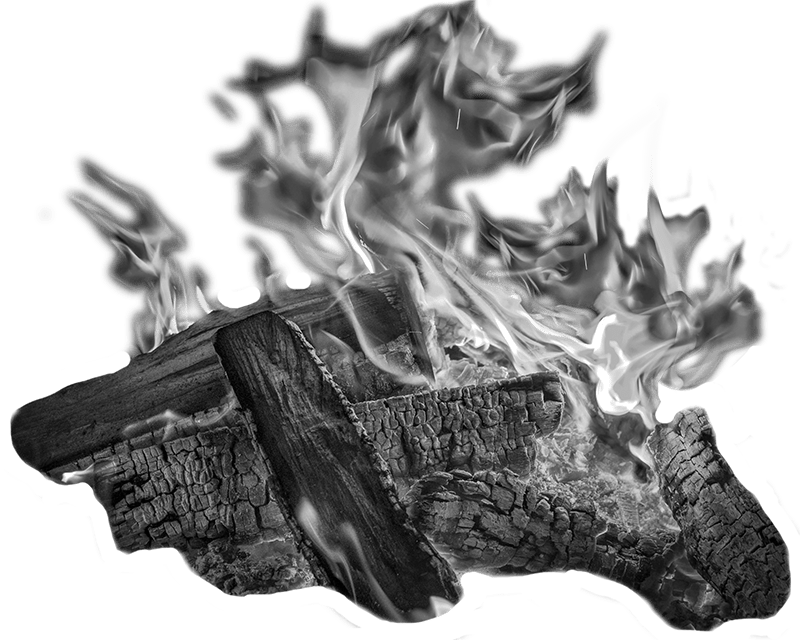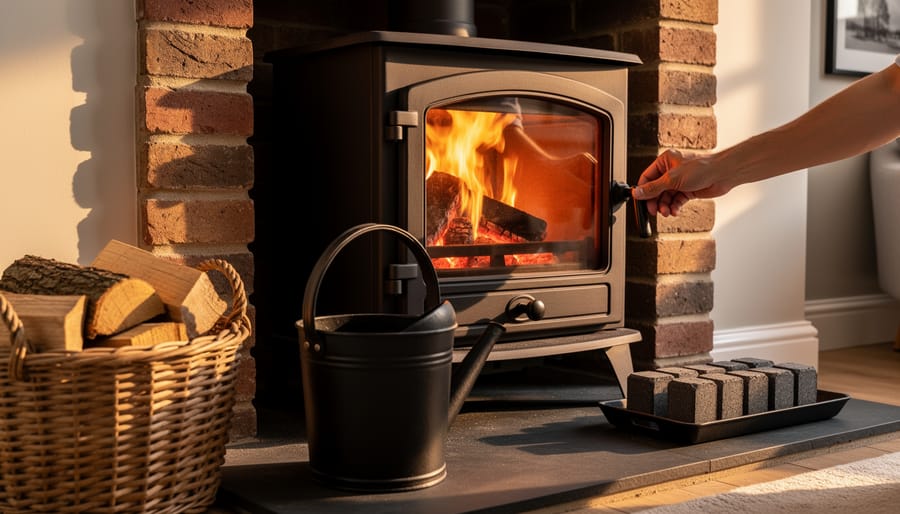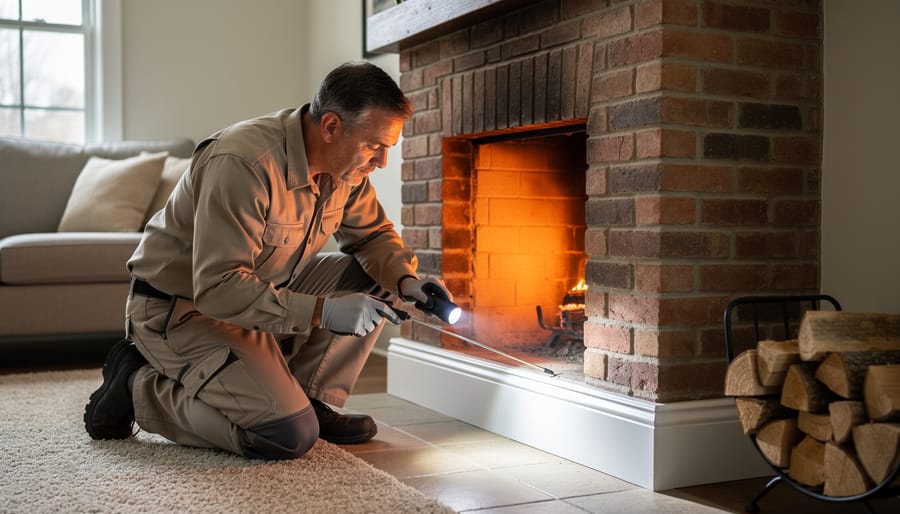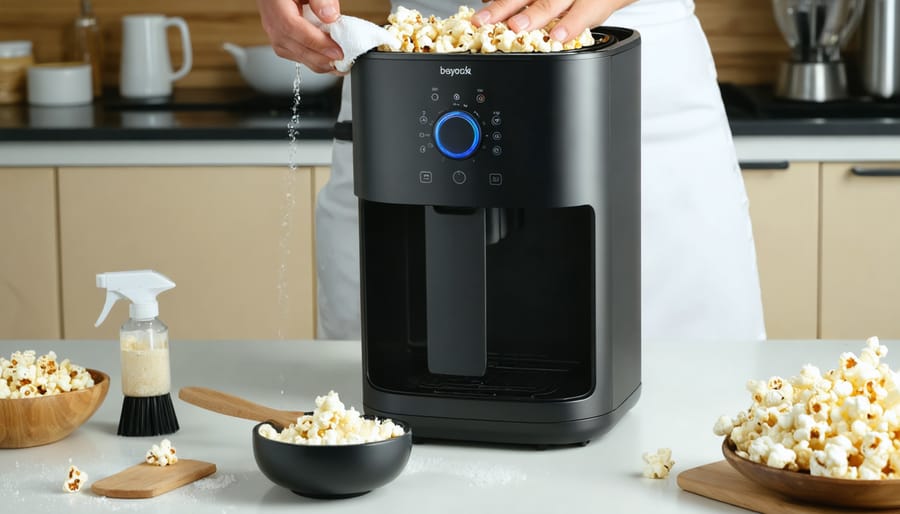**Prioritize automatic shut-off valves** as your first line of defense—these critical sensors detect flame failure within seconds and immediately cut gas flow, preventing dangerous leaks that could lead to carbon monoxide buildup or explosion risks in your home.
**Install flame failure devices** on every burner to ensure gas stops flowing the moment a flame extinguishes unexpectedly from wind, boil-overs, or accidental knob bumps. Modern gas stoves include thermocouples or flame supervision devices that act as vigilant guardians, making cooking safer for families with children or pets who might inadvertently create hazardous situations.
**Verify your stove includes child safety locks** that prevent curious hands from turning knobs and releasing unlit gas into your kitchen. These mechanical or electronic controls add a crucial barrier between everyday family life and potential accidents, giving you peace of mind whether you’re cooking dinner or stepping away briefly.
**Check for spillage trays and sealed burners** that contain liquids and food debris, preventing them from clogging gas ports or creating difficult-to-clean fire hazards. Quality sealed burner designs channel spills away from internal components while making cleanup effortless—a perfect blend of safety and convenience.
**Ensure proper ventilation integration** exists between your gas stove and kitchen exhaust system. Adequate airflow removes combustion byproducts and maintains healthy indoor air quality, transforming your cooking space into a safer, more comfortable environment that protects your family’s wellbeing while you create warm, memorable meals together.
Understanding these essential safety features empowers you to evaluate current appliances and make informed decisions when upgrading your kitchen’s heart.
Why Gas Stove Safety Features Matter More Than Ever
Gas stoves have been beloved fixtures in kitchens for generations, offering precise temperature control and that satisfying visual connection to the cooking process. Yet beneath this familiar comfort lies a reality every homeowner needs to understand: gas appliances come with inherent risks that demand our attention and respect.
The dangers are real and measurable. Gas leaks represent one of the most serious concerns, as natural gas can accumulate in enclosed spaces and create explosive conditions. Even a small leak from a burner or connection point can pose significant hazards to your household. If you’ve ever noticed that distinct sulfur smell near your cooktop, you might be dealing with a gas stove leaking gas situation that requires immediate attention.
Beyond explosion risks, incomplete combustion produces carbon monoxide—an invisible, odorless killer that sends thousands of people to emergency rooms each year. When burners aren’t adjusted properly or ventilation is inadequate, this toxic gas can silently accumulate in your home, affecting your family’s health without warning signs.
Fire hazards round out the trifecta of concerns. Unattended flames, overheating cookware, and nearby combustible materials create countless opportunities for kitchen fires. According to the National Fire Protection Association, cooking equipment is the leading cause of home fires.
Here’s the encouraging news: modern safety features have evolved dramatically to address each of these risks. Today’s gas stoves incorporate multiple layers of protection that our grandparents never had access to. Understanding these features isn’t just about making smart purchasing decisions—it’s about creating a safer environment where you can enjoy cooking without compromising your family’s wellbeing. Just as we’ve embraced eco-friendly heating solutions in other areas of our homes, prioritizing safety features in our gas appliances represents a commitment to responsible, modern living.
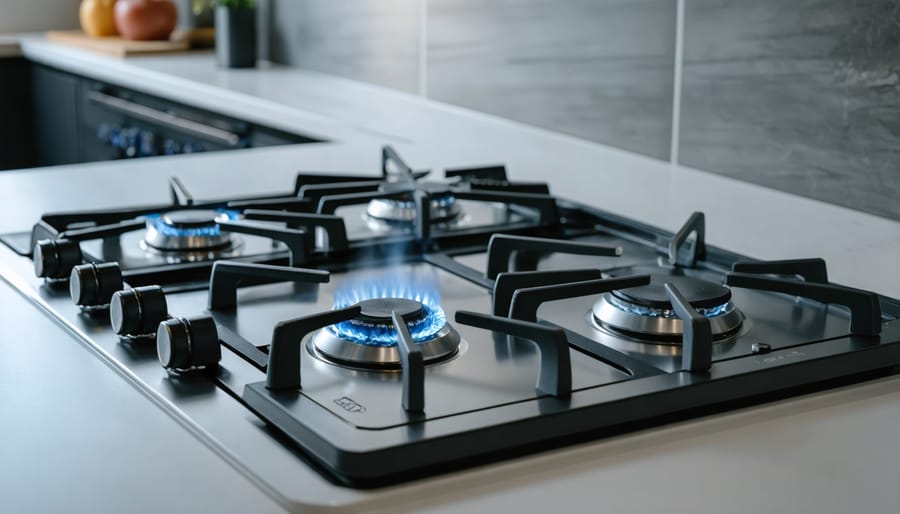
Automatic Shut-Off Valves: Your First Line of Defense
Flame Failure Devices Explained
One of the most reassuring safety features in modern gas stoves is the flame failure device—your appliance’s vigilant guardian against gas leaks. Think of it as a reliable sentinel that never sleeps, constantly monitoring your burners to ensure your home stays safe.
The most common type uses a **thermocouple**, a simple yet ingenious device positioned right next to the burner flame. Here’s how it works: when your burner is lit, the flame heats the thermocouple, which generates a small electrical current. This current keeps a safety valve open, allowing gas to flow. If the flame goes out unexpectedly—whether from a draft, a pot boiling over, or any other reason—the thermocouple cools down within seconds. Without that heat-generated current, the valve automatically snaps shut, cutting off the gas supply before it can accumulate in your kitchen.
More advanced models use **flame supervision devices** with electronic sensors that provide even faster response times. These sophisticated systems can detect flame absence almost instantly, offering an extra layer of protection for your family. This technology works seamlessly in the background, giving you peace of mind whether you’re simmering soup or entertaining guests around your warm, inviting kitchen.
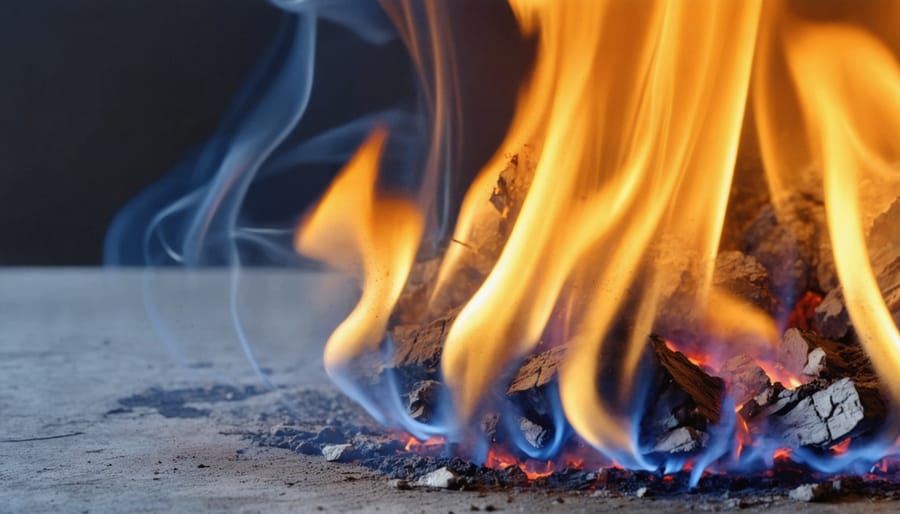
What to Do When Your Shut-Off Valve Isn’t Working
If you discover your shut-off valve isn’t working properly, don’t panic—but do take it seriously. First, resist the urge to force a stuck valve, as this can damage the mechanism or create dangerous gas leaks. Instead, turn off the gas supply at your home’s main gas meter immediately to ensure safety.
For minor issues like a stiff valve that hasn’t been used in years, you might notice it simply needs gentle encouragement. However, this is truly one area where calling a licensed professional is worth every penny. Gas systems aren’t the place for DIY experimentation—even small mistakes can have serious consequences for your family’s safety.
A qualified technician can determine whether your valve needs lubrication, repair, or complete replacement. They’ll also check for corrosion, verify proper sealing, and ensure everything meets current safety codes. While you’re waiting for professional help, keep everyone away from the appliance and don’t attempt to light it.
Remember, a functioning shut-off valve is your first line of defense in emergencies. Regular maintenance checks—ideally annually—can prevent problems before they start, giving you peace of mind as you enjoy your home’s warmth and comfort.
Gas Leak Detection Systems That Actually Work
Gas leak detection systems serve as your kitchen’s silent guardian, providing an essential layer of protection that goes beyond your nose’s ability to detect natural gas. While modern gas stoves are remarkably safe, adding a dedicated detection system gives you peace of mind and critical early warning when it matters most.
**Built-in vs. Aftermarket Options**
Many newer gas ranges come equipped with built-in leak detection, automatically shutting off gas flow when irregularities are detected. If you’re working with an older stove, aftermarket detectors are highly effective and surprisingly affordable. Quality plug-in or battery-operated models typically range from $30 to $150, making them an accessible safety upgrade for any household.
These devices continuously monitor for natural gas and carbon monoxide—both colorless, potentially deadly threats. When dangerous levels are detected, they emit loud audible alarms (usually 85 decibels or higher) and feature visual alerts through flashing LED indicators. Premium models can even send smartphone notifications, allowing you to respond quickly whether you’re home or away.
**Strategic Placement for Maximum Protection**
Proper placement dramatically affects detection effectiveness. Natural gas is lighter than air, so install detectors on walls about 12 inches from your ceiling and within 20 feet of your gas appliances. Avoid placing them near windows, doors, or ventilation fans where airflow might dilute gas concentrations before detection occurs.
For comprehensive coverage, consider installing detectors on every level of your home, especially near sleeping areas. This creates a protective network that ensures dangerous leaks won’t go unnoticed, regardless of where they originate. Remember to test your detectors monthly and replace batteries annually—a small maintenance routine that could prevent catastrophic consequences.
Child Safety Locks and Knob Covers: Small Features With Big Impact
Sometimes the most effective safety features are also the simplest. If you have young children or curious toddlers at home, child safety locks and knob covers deserve serious consideration—they’re your first line of defense against accidental ignition and burns.
Many modern gas stoves come with built-in control lock features that disable the knobs and control panel with the push of a button. This digital lock prevents little hands from turning on burners when you’re not looking. If you’re shopping for a new stove, this feature should be high on your priority list for families with young children.
For those with existing stoves, aftermarket knob covers offer an affordable and effective solution. These clear plastic covers fit over your stove knobs, requiring an adult’s dexterity to remove before the knob can be turned. They typically cost less than twenty dollars for a complete set and install in minutes without any tools.
Some homeowners prefer removable knobs that can be taken off entirely when the stove isn’t in use. While this requires a bit more effort on your part, it provides foolproof protection—no knobs means no way to accidentally ignite the burners.
Think of these safety features as you would childproofing any heat source in your home. Just as you’d secure a fireplace or heating system, your cooking appliances deserve the same thoughtful attention. These small investments create peace of mind that’s truly priceless, allowing you to focus on what matters most—creating a warm, safe home for your family.
Proper Ventilation: The Safety Feature You Can’t Ignore
When it comes to gas stove safety, proper ventilation isn’t just a nice-to-have—it’s absolutely essential for protecting your family’s health and wellbeing. Every time you fire up your burners, combustion produces byproducts including carbon monoxide, nitrogen dioxide, and water vapor that need somewhere to go. Without adequate ventilation, these invisible gases can accumulate in your kitchen, creating potential health hazards.
Think of your ventilation system as the lungs of your kitchen. A quality range hood should ventilate to the outside rather than simply recirculating air through a filter. While understanding gas stove ventilation requirements can vary by location and stove type, the general rule is simple: you need sufficient airflow to remove combustion byproducts effectively.
Your range hood should cover the entire cooking surface and extend at least three inches beyond on each side. For optimal performance, aim for a ventilation rate of at least 100 cubic feet per minute (CFM), though larger stoves or heavy cooking may require 150-300 CFM. The hood should sit 24-30 inches above your cooktop for gas stoves—close enough to capture fumes but high enough for safe cooking.
How do you know if your ventilation isn’t cutting it? Watch for these warning signs: excessive moisture or condensation on windows during cooking, lingering cooking odors that don’t dissipate, soot marks on walls or ceilings near the stove, or frequent headaches when spending time in the kitchen. If you notice these red flags, it’s time to upgrade your ventilation system or have it inspected by a professional. Remember, fresh air isn’t just about comfort—it’s about creating a safe, healthy cooking environment for everyone in your home.

Electronic Ignition vs. Standing Pilot Light: Which Is Safer?
Modern gas stoves offer two primary ignition methods, each with distinct safety profiles worth understanding. Electronic ignition systems have become increasingly popular in recent years, and for good reason—they represent a significant advancement in both safety and efficiency for your home.
Traditional pilot lights burn continuously, maintaining a small flame that ignites your burners when needed. While reliable, this constant flame consumes gas 24/7, even when you’re not cooking. More importantly from a safety perspective, pilot lights can accidentally extinguish due to drafts or debris, potentially allowing unburned gas to accumulate in your home—a serious safety concern that requires immediate attention.
Electronic ignition systems, on the other hand, create a spark only when you turn on a burner, eliminating the continuous gas consumption and the risk of an extinguished pilot light. This on-demand approach significantly reduces the chance of gas leaks during periods of non-use, making them the safer choice for most households. You’ll also appreciate the environmental benefits—electronic ignition reduces your carbon footprint by eliminating unnecessary gas burning, aligning with eco-friendly home heating and cooking practices.
From an efficiency standpoint, electronic ignition systems can reduce your gas consumption by up to 30% compared to standing pilots. While both systems are generally safe when properly maintained, electronic ignition offers peace of mind through its fail-safe design. If you’re upgrading your kitchen or evaluating your current stove’s safety features, electronic ignition represents the modern standard in gas appliance safety and efficiency.
What to Look for When Buying a New Gas Stove
Shopping for a new gas stove is an exciting step in creating a warm, inviting kitchen where family and friends gather. But beyond aesthetics and cooking power, safety should be your top priority. Here’s what to look for to ensure you’re bringing home an appliance that protects what matters most.
**Must-Have Safety Features**
Every gas stove you consider should include automatic ignition systems that eliminate the need for matches or lighters, reducing burn risks. Flame failure devices are non-negotiable—these sensors detect when a flame goes out and automatically shut off the gas supply within seconds. Look for sealed burners that prevent spills from reaching the gas lines, and ensure the unit has sturdy, well-designed grates that keep cookware stable.
**Smart Upgrades Worth Considering**
If your budget allows, consider models with child safety locks that prevent little hands from turning on burners unsupervised. Gas leak detection systems offer an extra layer of protection, alerting you to potential problems before they become dangerous. Some modern stoves include automatic shut-off timers—a thoughtful feature that gives you peace of mind if you’re prone to distraction while cooking.
**Certification Standards Matter**
Never compromise on certification. Look for labels from recognized safety organizations like UL (Underwriters Laboratories), CSA (Canadian Standards Association), or your country’s equivalent. These certifications mean the stove has undergone rigorous testing for safety and performance. Additionally, check that the model meets current emissions standards—an eco-friendly choice that also indicates better combustion efficiency and fewer indoor air quality concerns.
Take time to read reviews from other homeowners, and don’t hesitate to ask retailers specific questions about safety features before making your investment.
Simple Maintenance That Keeps Safety Features Working
Keeping your gas stove’s safety features in top shape doesn’t require an engineering degree—just a little consistent attention. Think of it as caring for any important part of your home that keeps your family safe and comfortable.
**Monthly Quick Checks You Can Handle**
Start by observing your burner flames during routine cooking. They should burn blue and steady. If you notice yellow flame issues or excessive flickering, it’s time to clean the burner ports with a soft brush or call for service. Test your flame failure device by lighting a burner and gently blowing it out—the gas should stop flowing immediately. Clean spillover trays and burner grates to prevent blockages that interfere with safety sensors.
**Quarterly Deep Maintenance**
Every three months, check gas line connections for signs of wear or loose fittings. Mix a little dish soap with water and brush it onto connection points—bubbles indicate a leak requiring immediate professional attention. Inspect ignition systems and listen for consistent clicking sounds. Wipe down control knobs and ensure they turn smoothly without sticking.
**Annual Professional Service**
Schedule a yearly inspection with a certified technician who can calibrate safety sensors, test thermal cutoff devices, and verify proper ventilation. They’ll check components you can’t easily access and ensure everything meets current safety standards. This investment typically costs less than $150 and provides invaluable peace of mind.
Keep a simple maintenance log on your phone or kitchen bulletin board—it helps you stay consistent and provides valuable history if problems arise.
Investing in gas stove safety features isn’t just about ticking boxes on a compliance checklist—it’s about creating a kitchen environment where you can cook with confidence and peace of mind. Just as you wouldn’t skimp on safety features for your fireplace or heating system, your gas stove deserves the same thoughtful consideration. These protective mechanisms work silently in the background, allowing you to focus on what matters most: preparing delicious meals for your loved ones.
Now is the perfect time to audit your current setup. Walk through the safety features we’ve discussed—flame failure devices, automatic shut-off valves, child safety locks, and proper ventilation systems. Does your stove have these protections? Are they functioning correctly? If you’re unsure, schedule a professional inspection. Think of it as a wellness check for one of your home’s hardest-working appliances.
Whether you’re shopping for a new gas stove or evaluating your existing one, you’re now equipped with the knowledge to make informed decisions. Look beyond aesthetics and burner power—prioritize models with comprehensive safety features that align with your household’s needs. Remember, the best safety feature is an informed homeowner who understands both their equipment and the simple maintenance practices that keep everything running smoothly. Your kitchen should be a place of warmth, creativity, and above all, safety for everyone who gathers there.
